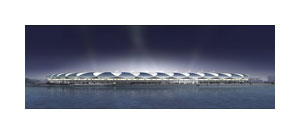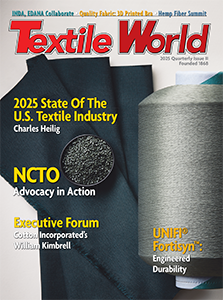Many countries around the world are suffering because of the current financial crisis. Hong Kong is
not excluded in this context. However, according to a so-called independent report just published
in Hong Kong, the local banking system is stable and in robust condition, and has escaped the worst
of the current global financial squeeze.
Mainland Banking
The report found that Hong Kong had bounced back well from the Asian financial crisis, and
that its banking system “has so far been relatively unscathed” from the new crisis facing the
global banking system, triggered by the US sub-prime market crisis. A more fundamental issue for
the city’s banking regulator, said the report, will be how best to manage its growing integration
with the banking system on the Chinese mainland.
Opportunities And Risks
The ability to expand into the mainland will create new business opportunities for Hong Kong
banks, which are facing increasing competition in their domestic market. On the other hand, this
move will also bring increased risks. Both the Hong Kong Monetary Authority (HKMA) and the banks
will need to understand the nature of these risks and ensure that there are adequate means in place
to control them. According to the experts, the cooperation with the China Banking Regulatory
Commission will be a fundamental factor.
Professionalism And Effectiveness
The report also found that the HKMA is widely respected within the banking sector for its
professionalism and effectiveness. It is viewed by outside commentators, including international
credit ratings agencies, as being a player in the premier league. The review was initiated last
year by the HKMA and covered a wide range of areas, including recent trends and issues in banking,
the authority’s functions and powers under the Banking Ordinance, its supervisory and policy
framework, authorization of financial institutions, and safety-net arrangements. HKMA CEO Joseph
Yam commented, “[T]he report’s recommendations would be studied, to see how they can be applied to
further strengthen our work in maintaining banking stability.
The latest Moody’s Global Banking Survey also affirmed the strength of Hong Kong’s banking
industry. Issued in June, Moody’s industry outlook for Asia’s banks over the next 18 months is
negative, although not drastically so. A number of mitigating factors will serve to cushion the
impact on the banks of the current credit crunch, the sub-prime crisis, slowing global economies
and rising inflation.
Monetary Statistics For August 2008
Recent statistics by the HKMA report total deposits with authorized institutions decreased by
0.8 percent in August 2008. Hong Kong dollar deposits declined by 0.2 percent during the month, as
the contraction in demand and savings deposits exceeded the increase in time deposits. Foreign
currency deposits also dropped by 1.3 percent in August. Accounting for around 2.9 percent of
foreign-currency deposits, renminbi deposits in Hong Kong contracted further during the month, by
7.7 percent to 71.1 billion renmimbi at the end of August.
Total loans and advances rose by 0.6 percent in August. Loans for use in Hong Kong expanded
by 0.7 percent, and loans for use outside Hong Kong grew by 0.2 percent. Because loans continued to
climb while deposits declined, the Hong Kong dollar loan-to-deposit ratio increased to 83.8 percent
at the end of August.
Seasonally adjusted, the Hong Kong dollar for one month increased by 0.5 percent in August
and rose by 10.5 percent year-on-year. The unadjusted Hong Kong dollar for three months declined by
0.1 percent during the month but expanded by 0.2 percent from a year earlier.
Solid Financials
In a speech to the Hong Kong Association of Banks, Hong Kong Financial Secretary John Tsang
praised the banking sector for its strong financial and liquidity positions. These have cushioned
the economy against the global financial turmoil. He pledged that the government would work with
financial regulatory bodies to ensure stability in the financial market and the economy. Tsang is
convinced that “our strong fundamentals, sound regulatory framework and prudent risk management by
financial institutions provide staunch support to Hong Kong in riding out the storm.” We’ll see in
the (very) near future.
October 7, 2008






